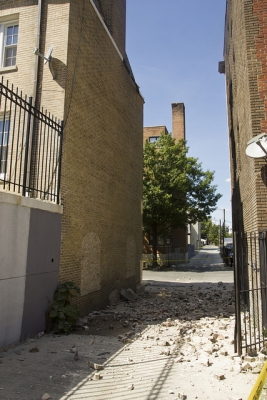JulianConstruction.com: Earthquake Preparedness--Online California Homeowner Resources

Earthquakes occur on a regular basis in California. Over 100 faults in the state produce thousands of quakes each year. The largest fault is the San Andreas Fault, which runs for hundreds of miles up and down California.
Discovered by a UC Berkeley geology professor in 1895, the San Andreas Fault has been responsible for large quakes (above 6.0) occurring in Monterey County approximately every 22 years. The last large quake hit the area in 2004.
In a 2006 earthquake study, geophysicist Yuri Fialko concluded that San Andreas Fault stress levels have again increased, and that the fault is ready for the next “big one,” an earthquake with a magnitude of 7.0 or higher.
Fialko also noted that large quakes have not occurred in the southern part of the fault (San Bernardino, Riverside and Imperial counties) for over 300 years. The last large quake in Los Angeles County was the magnitude 6.7 Northridge earthquake in 1994, which caused over 60 fatalities, 8,700 injuries, and the structural failure of buildings, parking structures and freeways.
Most Californians are aware of the possible dangers of a large quake, such as ground movement and displacement, flooding and fire. Many state residents have participated in earthquake preparedness programs to increase their chances of survival when the big one finally hits. However, it was found in a 2010 California Earthquake Preparedness Survey, that “Californians in high risk areas are not getting ready in proportion to the differential risks they face.”
Also, despite the potential damage that can be caused by a major quake, less than 20% of California homeowners have earthquake insurance. Some believe that if their home made it through the last big quake, it will survive the next. However, according to a Los Angeles Times article, “some respected earthquake researchers are themselves spending money on earthquake retrofitting rather than paying for insurance coverage.”
Earthquake retrofitting makes a structure more resistive to seismic activity. Techniques include house bolting and various structural enhancements for added security and stability. A retrofitting can not only minimize earthquake damage, it makes the building safer for occupants.
There are many online resources to help California residents, including homeowners, with earthquake preparedness, including The California Seismic Safety Commission (http://www.seismic.ca.gov/), Southern California Earthquake Center (SCEC) (http://www.scec.org/) and Federal Emergency Management Agency (FEMA) (http://www.fema.gov/).
The California Seismic Safety Commission has a variety of information on earthquakes, as well as several publications. The Commission researches and investigates earthquakes.
The SCEC, located at the University of Southern California, is an organization of scientists and students with a special focus on Southern California earthquakes. SCEC publications include Seismic Hazards in Southern California and Putting Down Roots in Earthquake Country, which contains a comprehensive section on earthquake preparedness. The booklet can be downloaded in both English and Spanish.
There is also a special edition for the San Francisco Bay Area.
The California Emergency Management Agency (CalEMA) (http://www.calema.ca.gov/Pages/default.aspx) is another organization involved in earthquake preparedness, and is an organizer of The Great California ShakeOut.
To find out if your home is earthquake ready, consult an experienced earthquake preparedness foundation contractor. They can do a foundation inspection and see what needs to be done to protect your home.
